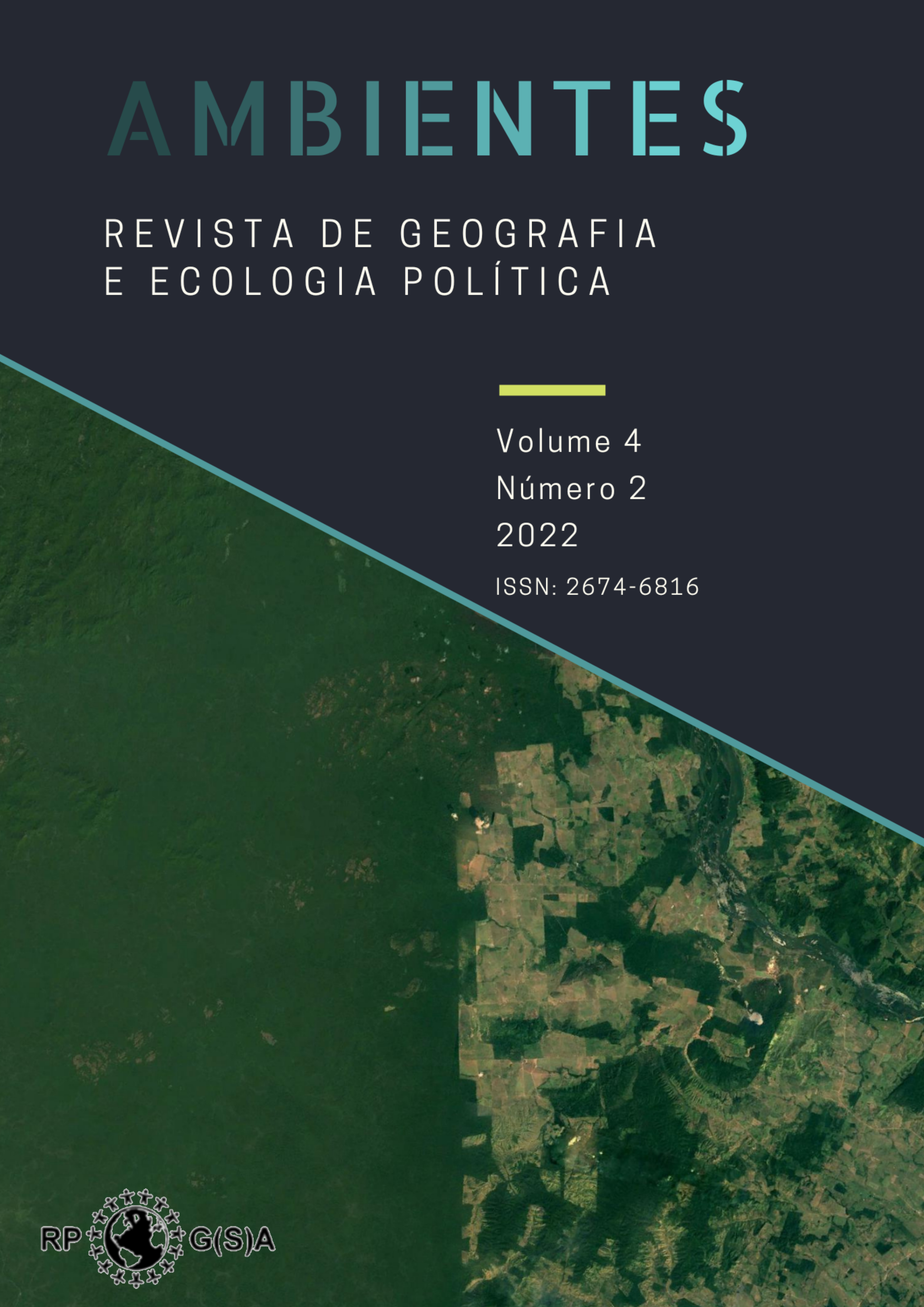The geography of borders in the municipality of Porto Velho: União Bandeirantes and Rio Pardo and the reflexes of the negligence of the territorial management of the state in Rondônia
DOI:
https://doi.org/10.48075/amb.v4i2.29919Abstract
Porto Velho is located in the southern Amazon and shows spatial changes that allow us to understand the dynamics of the rural areas in Rondônia state, through the expansion of the agricultural frontier in search of new areas for livestock activity and, later, monoculture of soybeans and other grains that are part of the commodities traded by the state. Between 1999 and 2018, União Bandeirantes and Rio Pardo expressed similar forms of occupation, environmental, territorial and social impacts that are part of the agricultural frontier expansion process. Among impacts are an increase in deforestation and environmental degradation that led/provide pressures, tensions and conflicts in the Protected Areas: Karipuna Indigenous Land, Jacy-Paraná Resex and Bom Futuro National Forest. In this time frame, we aim to understand the historical materiality that resulted from the advance of agricultural capital in forest areas, linked to the process of large-scale land incorporation. These arable lands place Brazil in the contradiction of expanding agriculture and neglecting the Socioeconomic and Ecological Zoning (ZSEE), harmfully affecting indigenous peoples and traditional communities that are made invisible, in addition to their expulsions being minimized, naturalized as consequences of the “economic development” of the country. Anchored in the dialectical method and qualitative-quantitative methodology, we analyzed data on agricultural production, deforestation and mineral extraction, as a reflection of the denial of the ZSEE in União Bandeirantes and Rio Pardo.
Keywords: Border; Livestock; Peasantry; Logging; Protected Areas.
Downloads
Published
How to Cite
Issue
Section
License

This work is licensed under a Creative Commons Attribution-NonCommercial-ShareAlike 4.0 International License.
Aviso de Direito Autoral Creative Commons
Política para Periódicos de Acesso Livre
Autores que publicam nesta revista concordam com os seguintes termos:
1. Autores mantém os direitos autorais e concedem à revista o direito de primeira publicação, com o trabalho simultaneamente licenciado sob a Licença Creative Commons Attribution que permite o compartilhamento do trabalho com reconhecimento da autoria e publicação inicial nesta revista.2. Autores têm autorização para assumir contratos adicionais separadamente, para distribuição não-exclusiva da versão do trabalho publicada nesta revista (ex.: publicar em repositório institucional ou como capítulo de livro), com reconhecimento de autoria e publicação inicial nesta revista.
3. Autores têm permissão e são estimulados a publicar e distribuir seu trabalho online (ex.: em repositórios institucionais ou na sua página pessoal) a qualquer ponto antes ou durante o processo editorial, já que isso pode gerar alterações produtivas, bem como aumentar o impacto e a citação do trabalho publicado (Veja O Efeito do Acesso Livre).
Licença Creative Commons
Esta obra está licenciada com uma Licença Creative Commons Atribuição-NãoComercial-CompartilhaIgual 4.0 Internacional, o que permite compartilhar, copiar, distribuir, exibir, reproduzir, a totalidade ou partes desde que não tenha objetivo comercial e sejam citados os autores e a fonte.


